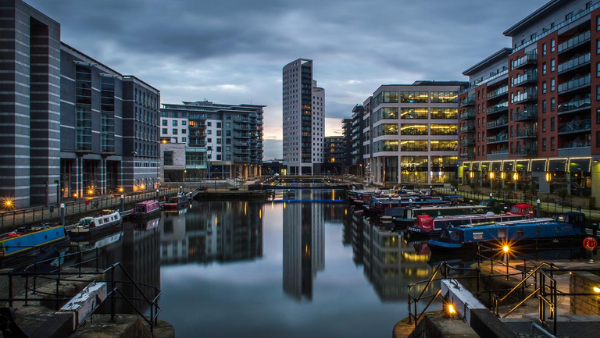Economically, nothing much happened for 130 millennia of human history. Then 250 years ago all hell broke loose. So wrote the economist Eric Beinhocker and he was not wrong.
There were brief explosions of inventiveness, such as during the Roman Empire, but these would come to an end with the fall of the political system that sustained them. Average incomes improved at glacial rates: in the first century AD, most people could expect an income of around $1.20 a day; by the 18th, it had risen to $1.70.
This all changed in the late 1700s. Britain became the birthplace of an extraordinary revolution that would come to transform the world. Modern capitalism was being built on the back of an enormous flowering of commercial innovation: new machines, new products, new production systems, new business structures and new markets came to life.
Children learn in school that the Industrial Revolution lasted from about 1760 to 1820. But the revolution never stopped. There is a clear line of continuity from the opening of Arkwright’s Cromford textile factory in 1771 to Stephenson’s Rocket in 1829 to Carnegie’s Pittsburgh steelworks firing in 1875 to the production of the first Model T in 1908 to Toyota’s ground-breaking move to flexible production in the 1970s.
The impact was enormous. Average global incomes grew tenfold in just eight generations. Public healthcare took unimaginable strides and communications networks advanced rapidly. Millions now travel internationally every day and mass education is widespread.
The debates about why this happened have raged ever since, but what they miss is that something very human was released in the 1760s: the power to create. The human compulsion to turn ideas into reality suddenly intensified and has kept intensifying ever since. A switch was flicked and, thankfully, it has proven very hard to turn off. We are entering what could be the most impressive phase in this history, a period when creativity is driven not by an entrepreneurial elite backed by technical specialists, but by everyone. All hell looks likely to break loose once again.
Creative times
For many years, the way of creating and selling things, whether a manufactured product or a service, has been well established. During the past century, the modern corporation turned the creative process into a highly segmented system where each element had its own department.
Typically, the internal structures of the corporation were very hierarchical, but a powerful hierarchy also existed externally. The corporation actively created things and customers passively consumed them. Companies would use market research to find out what their customers wanted but, ultimately, the only way a consumer could be proactive was when deciding whether or not to buy a product or service.
In creative times, however, that hierarchy is disappearing. It began with the open innovation trend around the turn of the century as companies like Lego and Procter & Gamble discovered that letting customers in on some of the R&D and design work once carried out exclusively behind closed doors reaped commercial dividends. But the collapse of traditional creative hierarchies has accelerated rapidly since then.
This has happened most noticeably in industries that rely on information. Publishing, journalism and the entertainment sectors are going through a radical transformation, posing an existential challenge to the newspapers, networks and companies that once dominated.
However, this shift is now happening outside entertainment in new and unexpected ways. Airbnb, which lets people rent their homes or spare rooms for short periods, has hotel chains everywhere worried. Crowdfunding and peer-to-peer lending is transforming the way startups and, increasingly, growth businesses raise finance, taking it out of the hands of banks and venture capitalists. Even the highly controlled world of central banking is not safe, as alternative currencies such as Bitcoin and Litecoin seek to offer consumers an alternative to state-backed money. And soon the ‘internet of things’ – which allows everyday objects to send and receive data over the internet – will allow people to shape, in precise detail, the way their products are manufactured and their energy is generated.
The overall result of this is that concentrated forms of power are beginning to weaken. As the writer Moisés Naím has argued in his recent book The End of Power, hugely powerful institutions such as multinational corporations, nation states, newspapers and conventional armies find their authority being eroded year on year. Individuals and small groups, often benefiting from the networking power of the internet, are setting up their own initiatives and doing things their own way.
This is not to say that governments and corporations are devoid of all power – far from it – but the capacity of these bodies to enforce their will is spectacularly diminished when compared with 30 or even 20 years ago.
Reasons to be cheerful
This seizing by the masses of the power to create has huge benefits. The ability to create is a fundamental part of what it is to be human. Throughout history, philosophers and others have noted the inexhaustible capacity of humans to imagine an alternative way of doing something and then to turn that vision into reality. When we are being creative, we are more fully human and, as a result, more fulfilled.
Indeed, an important concept behind the rise of liberal democracy was the belief that greater freedom was a good thing, as it would allow humans to reach their full creative potential. This is a principle captured rather poetically by the liberal thinker Wilhelm von Humboldt (1767–1835) in a quote that hints at the promise today’s creative times may hold:
…man never regards what he possesses as so much his own, as what he does; and the labourer who tends a garden is perhaps in a truer sense its owner, than the listless voluptuary who enjoys its fruits… In view of this consideration, it seems as if all peasants and craftsman might be elevated into artists; that is, men who love their labour for its own sake, improve it by their own plastic genius and inventive skill, and thereby cultivate their intellect, ennoble their character, and exalt and refine their pleasures.
But as well as being a good thing in itself, the power to create offers new routes to a better society. Establishing a world where millions can apply their ingenuity to solving problems is far more likely to bring about adequate solutions than one where this power is delegated to an exclusive elite. The enormous and continuing impact of the open-source movement is built on the principle that many minds can spot and solve problems far quicker and better than a few technicians.
But the power to create enables problems to be solved at an even deeper level. It has the capacity to develop completely new economic, political and social forms that better meet people’s needs. This is because they are designed by the people themselves, rather than handed down from on high.
The US writer Steven Johnson, for example, has noted how on-line peer groups have created a new world of information exchange and action that relies on neither the centralised control of the state nor the price mechanism of the market. Initiatives like NHS Citizen are showing how large organisations can now engage democratically with a huge population of users or customers.
Risks of revolution
This is, however, where the downside of the power to create has to be acknowledged. Mass creativity is a highly disruptive force. As we can see from the publishing and entertainment worlds, the radical shifts promoted by the power to create can lead to firms shrinking or going bust and people losing their jobs. It also, of course, leads to new firms and jobs being established, but that is little comfort to those suddenly shut out of labour markets because their skills are no longer needed. The risk is that this disruption, like the shifts in manufacturing in the 1980s and 1990s, will leave certain communities permanently excluded from economic and social well-being.
The other risk is that a counter-trend emerges simultaneously with the expansion of the power to create. Mass creativity relies on mass platforms like Google, YouTube and Facebook. This places enormous concentrated power in the hands of a new elite of internet companies just as other, older institutions’ power is dissolved. Clearly, as recent revelations in the media have shown, this situation can also offer new ways for the state to reassert its control of populations if surveillance is abused.
There is clearly an urgent need for business, government and civil society bodies to understand the rise of creative times and to respond adequately. Attempts to hold back the deluge will fail and only serve to damage those who try to do so.
Efforts by authoritarian governments, for example, to control social media may give them some short-term respite, but the longer-term implications for the competitiveness and development of those nations’ economies are negative. Equally, businesses that try to undermine disruptive competition by flexing their legal or political muscles – such as New York hoteliers’ attempts to ban Airbnb or the London taxi trade’s opposition to the car-hire app Uber – are short-sighted.
Searching for solutions
This is a revolution that needs to be embraced and encouraged. The benefits – in terms of human fulfilment, economic growth and quality of life – are too great to ignore. That must mean government, business and civil society asking hard questions about whether current education and training regimes are fit for purpose in creative times, whether intellectual property and other regulatory systems enable or stifle mass creativity and how sectors that have historically been less subject to major innovation, such as public services, energy and transport, can be opened up.
However, we also need the right response to the dangers of the power to create. Government- and business-led programmes to support and retrain those who lose their jobs need to be put into place. Communities that might be particularly badly affected by the changes must not be allowed to drift for decades, as was the case with the parts of the UK and the wider world that were once reliant on heavy industry. Targeted support and investment to help these areas adapt to a new economy centred on mass creativity need to be put in place rapidly, rather than years after the worst effects of economic and social deprivation have set in.
Finally, we need a robust regulatory environment for the internet that ensures it remains a space for the flourishing of unexpected and creative human endeavour driven by commercial competition and social innovation. It is too precious to become a tool for the promotion of the interests of a few giant companies or, worse, the expansion of the more secretive and authoritarian aspects of government.
Joseph Schumpeter, the economist who placed the “creative destruction” of capitalism at the heart of his analysis, once said that pessimism always seems more profound than optimism. As the global economy still struggles back to health almost six years after the banking crash, pessimism is certainly de rigeur.
But the releasing of the power to create could be the next big step in humanity's progress. There is good reason to be optimistic but it is up to governments, business and civil society to make sure the potential is met.
This post appears as an article in the next issue of the RSA Journal due out shortly.
You can find Adam on Twitter here.
Related articles
-
Culture should be at the core of West Yorkshire's economic plans
Andy Haldane Tracy Brabin
Andy Haldane and Tracy Brabin, Mayor of West Yorkshire, discuss how investing in culture and creative industries can make a success of local growth and levelling up.
-
The impact of arts-based education
Mark Londesborough
Mark Londesborough on the findings from the final Learning About Culture report and the implications for arts-based learning.
-
How young people are shaping social change despite Covid-19 challenges
Aidan Daly
Despite the pandemic, school pupils are demonstrating creative confidence and a commitment to making their communities a better place.



Join the discussion
Comments
Please login to post a comment or reply
Don't have an account? Click here to register.
David,
Thanks for that very thoughtful comment. I agree, it would be very useful to understand how 'creative times' do or do not apply to Asian economies. Unfortunately my own knowledge of that part of the world is very limited which explains my rather euro-centric approach. Maybe once the thesis is more developed we could undertake some research specifically on Asia. One thing we do hope to do at the RSA is develop an international index of creativity; if we are able to include Asian countries in that it might offer a starting point for further analysis.
I live in Cheonan, South Korea, home to a fairly new Samsung factory. Factory is somewhat of an understatement; the place is huge - it is comprised of dozens of buildings, takes a good ten minutes to drive through, and is bordered by an estate of huge apartment blocks for families of workers, complete with an entire community of schools, shops, churches, etc. This is a rigidly hierarchical economic community at the top of which is a powerful family-based conglomerate (there is much discussion in Korea about how to rein in the power of these chaebols). As an Australian the idea of being an anonymous worker in such a corporation makes me despair; for many (not all) Koreans it's a respected and highly desirable career. There are cultural ideas and philosophies here that are valuable far beyond the provision of labour. This quite amazing socio-economic phenomenon has something about it that is in many ways antithetical to the Western creativity movement but that is nonetheless extremely valuable to global society. I applaud the more balanced take on creativity presented in this article, but would argue that, in general, the discussions on the nature and value of creativity must take on a more global tone and move on from the parochial western undertones that so often colour them. The East has far more to offer than just human labour.